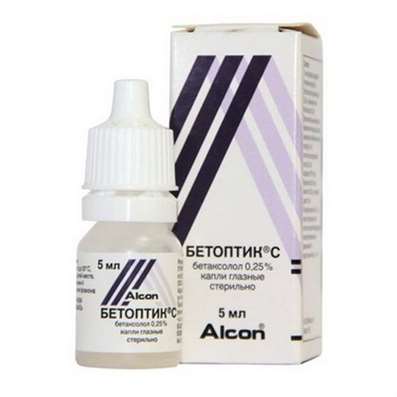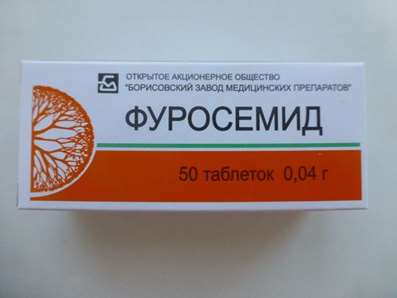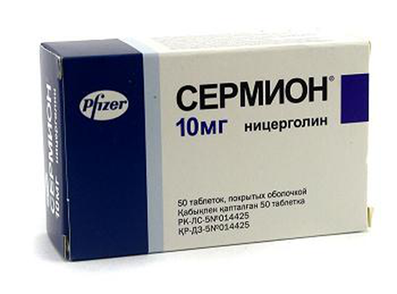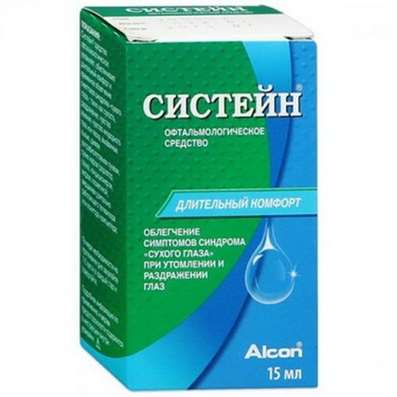Instruction for use: Diclofenac Sandoz
I want this, give me price
Active substance Diclofenac
ATX Code M01AB05 Diclofenac
Pharmacological group
Non-steroidal anti-inflammatory drug (NSAID) [NSAIDs - Acetic acid derivatives and related compounds]
Nosological classification (ICD-10)
G43 Migraine
The pain of migraine, Migraine, hemiplegic migraine, Migraine headache, A migraine attack, Continuous headache, hemicranias
H60.9 External otitis, unspecified
Inflammation of external auditory canal, Otitis, Chronic external otitis media
H65.9 Pulmonary otitis media, unspecified
Otitis media is allergic, Inflammatory diseases of the middle ear
J02.9 Acute pharyngitis, unspecified
purulent pharyngitis, Acute nasopharyngitis,Limfonodulyarny pharyngitis
J03.9 Acute tonsillitis, unspecified (angina agranulocytic)
Sore throat infections, Acute tonsillitis, Angina, Follicular tonsillitis, Angina alimentary-hemorrhagic, Secondary sore throat, Sore throat primary, Angina follicular, Angina, Inflammatory diseases of the tonsils, Catarrhal angina, Lacunar angina, Acute Sore Throat, Tonsillitis, Tonsillitis acute, Tonsillar angina, Follicular sore throat, Bacterial tonsillitis
J18.9 Pneumonia, unspecified
Pneumonia in immunodeficiency states, Pneumonia with Legionnaires' Disease, Community-acquired pneumonia, Hospital-acquired pneumonia, Hospital pneumonia, Hospital pneumonia, Interstitial pneumonia, Respiratory infections, Non-pneumococcal pneumonia, Pneumonia
M06.9 Other specified rheumatoid arthritis
Rheumatoid arthritis,Pain syndrome in rheumatic diseases, Pain in rheumatoid arthritis, Inflammation in rheumatoid arthritis, Degenerative forms of rheumatoid arthritis, Children's rheumatoid arthritis, Exacerbation of rheumatoid arthritis, Acute articular rheumatism, Rheumatic arthritis, Rheumatic polyarthritis, Rheumatoid arthritis, Rheumatic polyarthritis, Rheumatoid arthritis, Rheumatoid arthritis of active course, Rheumatoid arthritis, Rheumatoid polyarthritis, Acute rheumatoid arthritis, Acute rheumatism
M07.3 Other psoriatic arthropathies (L40.5 +)
Arthritis psoriatic, The generalized form of psoriatic arthritis, Psoriatic arthritis
M08 Juvenile [juvenile] Arthritis
Juvenile arthritis, Juvenile chronic polyarthritis, Juvenile chronic arthritis, Juvenile rheumatoid arthritis, Arthritis juvenile chronic
M10.9 Gout, unspecified
Arthritis Gouty, Acute gouty arthritis, Acute attack of gout, Gouty Arthritis, Articular syndrome with exacerbation of gout, Articular syndrome with gout, Urarturia, Chronic arthritic arthritis, Acute gout, Salt diathesis
M19.9 Arthrosis, unspecified
Change in brush with osteoarthritis, Osteoarthritis, Osteoarthrosis, Arthrosis of large joints, Pain syndrome in osteoarthritis, Pain syndrome in acute inflammatory diseases of the musculoskeletal system, Pain syndrome in chronic inflammatory diseases of the musculoskeletal system, Deforming arthrosis, Deforming osteoarthritis, Deforming osteoarthritis of joints, Osteoarthritis in the acute stage, Osteoarthritis of large joints, Acute pain syndrome with osteoarthritis, Post-traumatic osteoarthritis, Rheumatic osteoarthritis, Spondylarthrosis, Chronic osteoarthritis
M35.3 Rheumatic polymyalgia
Pseudoarthritis rhizomelic, Rheumatic polymyalgia, Pain syndrome in rheumatic diseases, Muscle pain with rheumatism, Extra-articular rheumatism, Extra-articular rheumatic syndrome, Extra-articular rheumatic diseases, Extra-articular rheumatic soft tissue injury, Extra-articular forms of rheumatism, Rheumatic soft tissue damage, Rheumatism of soft tissues, Rheumatic diseases of soft tissues, Rheumatic diseases of the periarticular soft tissues, Rheumatic affections of soft tissues, Rheumatic collagen diseases
M42 Osteochondrosis
Pain in spinal osteochondrosis, Cervical osteochondrosis, Radicular syndrome in osteochondrosis, intervertebral osteochondrosis, osteochondrosis, Osteochondrosis with radicular syndrome, Osteocondritis of the spine
M45 Ankylosing spondylitis
Ankylosing spondylarthrosis, Marie-Strumpel disease, Ankylosing spondylitis, Pain syndrome in acute inflammatory diseases of the musculoskeletal system, Pain syndrome in chronic inflammatory diseases of the musculoskeletal system, Bechterew's disease, Ankylosing spondylitis, Diseases of the spinal column, Rheumatic spondylitis, Bechterew-Marie-Strumpel disease
M54.3 Sciatica
Ishialgia, Neuralgia of the sciatic nerve, Sciatic neuritis
M54.4 Lumbago with sciatica
Pain in the lumbosacral spine, Lumbago, Sciatica, Lumbar syndrome
M65 Synovitis and tendosynovitis
Acute tenosynovitis, Tendovaginitis (tenovaginitis), Tendosinovit (tenosynovitis), Tendovaginitis, Osteoarthritis in musculo-articular diseases, Inflammatory disease of soft tissues, Nonspecific tenosynovitis, Tendosinovit
M71 Other bursopathies
Bursitis, Bursopathy, Diseases of soft tissues, Osteoarthritis in musculo-articular diseases, Inflammatory disease of soft tissues, Subacute bursitis
M79.1 Myalgia
Myofascial pain syndromes ,Pain syndrome in musculo-articular diseases, Pain syndrome in chronic inflammatory diseases of the musculoskeletal system, Pain in the muscles, Tenderness of muscles, Muscular soreness in severe physical exertion, Painful conditions of the musculoskeletal system, Pain in the musculoskeletal system, Pain in the muscles, Pain at rest, Muscle aches, Muscle pain, Musculoskeletal pain, Myalgia, Muscle pain, Muscle pain at rest, Muscle pain, Muscular pain of non-rheumatic origin, Muscle pain of rheumatic origin, Acute muscle pain, Rheumatic pain, Rheumatic pains, Myofascial syndrome, Fibromyalgia
M79.2 Neurology and neuritis, unspecified
Pain syndrome with neuralgia, Brachialgia, Occipital and intercostal neuralgia, Neuralgia, Neuralgic pain, Neuralgia, Neuralgia of intercostal nerves,Neuralgia of the posterior tibial nerve, Neuritis, Neuritis traumatic, Neuritis, Neurological Pain Syndromes, Neurological contractures with spasms, Acute neuritis, Peripheral neuritis,Post-traumatic neuralgia,Severe pain of a neurogenic nature, Chronic neuritis, Essential neuralgia
N23 Renal colic unspecified
Pain in renal colic, Pain smooth muscle spasm, Pain spasm of smooth muscles (renal and biliary colic, intestinal spasms, dysmenorrhea), Pain spasm of smooth muscles of internal organs, Pain spasm of smooth muscles of internal organs (kidney and biliary colic, intestinal spasms, dysmenorrhea), renal Colic, ureteral colic, Renal colic, Renal colic with urolithiasis, Kidney disease, Spasm of smooth muscle in diseases of the urinary system, The spasm of the urinary tract, The spasm of the ureter, The spasm of the ureters, Spasms of the urinary tract, Spasms of the urinary tract
N70 Salpingitis and oophoritis
Adnexitis, Inflammatory diseases of female genitalia, Inflammatory diseases of female genital organs, Infection of the genitals, Oophoritis, Acute adnexitis, Salpingitis, Salpingo-oophoritis, Chronic inflammatory diseases of the ovaries, Inflammation of the ovaries
N94.4 Primary dysmenorrhea
Primary functional dysmenorrhea, Pain in primary dysmenorrhea, Primary algodismenorea, Menstrual cramps
R10.4 Other and unspecified abdominal pain
Abdominal pain, Gastrointestinal spasm, intestinal colic, Colic in infants, The feeling of fullness, Resi abdominal, Spasm of smooth muscle in diseases of the digestive tract, The spasm of the biliary tract, Biliary tract spasm, enterospasm, Spasm of the digestive tract, Spasms of the digestive tract smooth muscle, stomach Cramps, gastrointestinal spasms, Spastic condition of the gastrointestinal tract, intestinal tenesmus, Feeling of fullness, Baby colic
R50.0 Fever with chills
High fever, Heat, Chills, elevated temperature, hyperthermia, Prolonged fever, Feverish syndrome, Fervescence, Increased body temperature in infectious and inflammatory diseases, fever Symptoms, febrile syndrome, Febrile state, Fever, Fever in infectious and inflammatory diseases, Fever with SARS, Fever with cold, Fever for colds, febrility, Feverish condition with flu, Feverish state in infectious and inflammatory diseases , Feverish state of infectious diseases and in the postoperative period, Feverish condition for colds, Febrile of different genesis, Feverish syndrome on the background of infectious diseases, Feverish syndrome in infectious and inflammatory diseases, Feverish syndrome with colds, Feverish syndrome of different genesis, Increased temperature for colds, Increased temperature at catarrhal and infectious and inflammatory diseases, Increased body temperature in cold, etc., Increased body temperature in cold and other infectious and inflammatory diseases, Increased body temperature in cold and other infectious and inflammatory diseases, Fever during pregnancy, Fever with thrombocytopenia, Febrile reaction in blood transfusion
R52.9 Unspecified Pain
Pain after cholecystectomy, Pain shooting, Non-malignant pain, Obstetric and gynecological pain, Pain syndrome, Pain in the postoperative period, Pain in the postoperative period after orthopedic surgery, Pain of inflammatory genesis, Pain than cancer genesis, Pain syndrome after diagnostic procedures, Pain after surgery Diagnostic, Pain after surgery, Pain after orthopedic surgery, Pain after injuries, Pain after the removal of hemorrhoids, Pain at the non-rheumatic inflammation of nature, Pain in inflammatory lesions of the peripheral nervous system, Pain in diabetic neuropathy, Pain in acute inflammatory diseases of the musculoskeletal system, Pain when the tendon pathology, Pain smooth muscle spasm, Pain spasm of smooth muscles (renal and biliary colic, intestinal spasms, dysmenorrhea), Pain spasm of smooth muscles of internal organs, Pain spasm of smooth muscles of internal organs (kidney and biliary colic, intestinal spasms, dysmenorrhea), Pain in trauma syndrome, Pain with injuries and after surgical interventions, Pain in chronic inflammatory diseases of the musculoskeletal system, Pain with duodenal ulcer, Pain syndrome in gastric ulcer, Pain syndrome in gastric ulcer and duodenal ulcer, pain, Pain during menstruation, pain syndromes, painful condition, Painful foot fatigue, Sore gums when wearing dentures, Soreness of the cranial nerves exit points, Painful menstrual irregularities, Painful dressings, Painful muscle spasm, Painful teeth growth, Melosalgia, Pain in the area of the surgical wound, Pain in the postoperative period, Pain in the body, Pain after diagnostic procedures, Pain after orthopedic surgery, Pain after surgery, The pains of the flu, Pain in diabetic polyneuropathy, Pain for burns, Pain during sexual intercourse, Pain during diagnostic procedures, Pain during therapeutic procedures, for colds Pain, Pain in sinusitis, Pain in trauma, Pain traumatic, The pain in the postoperative period, Pain after diagnostic procedures, The pain after sclerotherapy, Pain after surgery, postoperative Pain, Pain postoperative and posttraumatic, posttraumatic pain, Pain when swallowing, Pain in infectious and inflammatory diseases of the upper respiratory tract, The pain of burns, The pain in traumatic muscle injury, Pain in trauma, The pain of tooth extraction, The pain of traumatic origin, Pain caused by spasm of smooth muscles, Expressed pain syndrome, Expressed pain syndrome, traumatic origin, Postoperative pain, Post-traumatic pain, Post-traumatic pain syndrome, Torpid pain, Traumatic pain, Traumatic pain, Mild pain, Moderately severe pain, Moderate pain, Polyarthralgia with polymyositis
T14.0 Surface injury of unspecified body region
Abrasions, Scratch, Skin Wounds, Wounds of soft tissues, Hematoma, Hematoma of traumatic origin, Hematomas, Hematomas of muscles, Hematomas of soft tissues, Healing of the skin, Bruise, Bruising due to sprains and bruises, Microtrauma, External bruises, Small combing, Superficial hematoma, Superficial damage to the skin and mucous membranes, Subcutaneous hematoma, Post-traumatic hematoma, Post-traumatic disturbance of microcirculation, Skinness of the skin, Traumatic plexus lesions, Injury, Contusion of soft tissues, Joint bruise, Traumatic bruises, Traumatic injury, Primary treatment of surface contaminated wounds, Abrasion, Bruise
Z100 * CLASS XXII Surgical practice
Abdominal surgery, adenomectomy, Amputation, Coronary angioplasty, Angioplasty of the carotid arteries, Antiseptic skin treatment for wounds, Antiseptic Hand, Appendectomy, atherectomy, Balloon coronary angioplasty, Vaginal hysterectomy, The coronary bypass, Interventions in the vagina and cervix, Interventions on the bladder, Intervention in the mouth, Restoration and reconstructive surgery, Hand hygiene of medical personnel, Gynecologic surgery, Gynecological intervention, Gynecological surgery, Hypovolemic shock during operations, Disinfection of purulent wounds, Disinfection of wounds edges, Diagnostic intervention, Diagnostic procedures, Cervical Diathermocoagulation, Long-surgery, Replacing the fistula catheters, Infection in orthopedic surgery, Artificial heart valve, cystectomy, Short-term outpatient surgery, Short-term operation, Short surgical procedures, Krikotireotomiya, Blood loss during surgery, Bleeding during surgery and in the postoperative period, Kuldotsentez, laser photocoagulation, laser coagulation, retinal laser coagulation, Laparoscopy, Laparoscopy in Gynecology, CSF fistula, Small gynecological operations, Small surgical procedures, Mastectomy and subsequent plastic, mediastinotomy, Microsurgical operations on the ear, Mukogingivalnye operation, suturing, Minor surgery, neurosurgical operation, Immobilization of the eyeball in ophthalmic surgery, testectomy, pancreatectomy, Perikardektomiya, The period of rehabilitation after surgery, The period of, convalescence after surgery, Percutaneous transluminal coronary angioplasty, Pleural thoracentesis, Pneumonia postoperative and posttraumatic, Preparation for surgical procedures, Preparation for surgery, Preparation of the surgeon's hands before surgery, Preparation of the colon for surgical procedures, Postoperative aspiration pneumonia in neurosurgical and thoracic surgery, Postoperative nausea, Postoperative bleeding, postoperative granuloma, postoperative shock, The early postoperative period, myocardial revascularization, Radiectomy, gastric Resection, bowel resection, uterine Resection, liver Resection, enterectomy, Resection of part of the stomach, Reocclusion of the operated vessel, Bonding tissues during surgical procedures, Removal of sutures, Condition after eye surgery, Condition after surgery, Condition after surgery in the nasal cavity, Condition after gastrectomy, Status after resection of the small intestine, Condition after tonsillectomy, Condition after removal of the duodenum, Condition after phlebectomy, Vascular surgery, Splenectomy, Sterilization of surgical instruments, Sterilization of surgical instruments, sternotomy, Dental surgery, Dental intervention in periodontal tissues, strumectomy, Tonsillectomy, Thoracic surgery, total gastrectomy, Transdermal intravascular coronary angioplasty, Transurethral resection, Turbinektomiya, Removal of a tooth, cataract surgery, Removal of cysts, tonsillectomy, Removal of fibroids, Removing the mobile primary teeth, Removing polyps, Removing broken tooth, Removal of the uterus body, Removal of sutures, Urethrotomy, Fistula likvoroprovodyaschih ways, Frontoetmoidogaymorotomiya, Surgical infection, Surgical treatment of chronic limb ulcersm, Surgery, The surgery in the anal area, The surgery on the colon, Surgical practice, The surgical procedure, Surgical interventions, Surgery on the gastrointestinal tract, Surgical procedures on the urinary tract, Surgical procedures on the urinary system, Surgical intervention of the genitourinary system, Surgical procedures on the heart, Surgical manipulation, surgery, Surgery on the veins, Surgical intervention, Vascular surgery, Surgical treatment of thrombosis, cholecystectomy, Partial gastric resection, transabdominal hysterectomy, Percutaneous transluminal coronary angioplasty, Percutaneous transluminal angioplasty, Coronary artery bypass, tooth Extirpation, Extirpation of milk teeth, pulpectomy, pulsative cardiopulmonary bypass, tooth Extraction, teeth Extraction, cataract extraction, Electrocoagulation, endourological intervention, episiotomy, Etmoidotomiya, Complications after tooth extraction
Composition and form of release
Tablets, coated with a coating.
active substance:
diclofenac sodium 25 mg\ 50 mg
auxiliary substances: lactose - 15/30 mg; calcium hydrogen phosphate - 20/40 mg; MCC - 24.5 / 49 mg; corn starch - 10/20 mg; sodium starch glycolate - 4/8 mg; magnesium stearate - 1/2 mg; colloidal silica - 0.5 / 1 mg
shell: eudragit L30 - 6.43 / 1.32 mg; triethyl citrate - 0.64 / 1.13 mg; talc - 2.57 / 4.52 mg; titanium dioxide (E171) - 0.19 / 0.33 mg; iron oxide yellow (E172) - 0.54 / 0.95 mg
in a blister of 10 pcs .; in a pack of cardboard 2 or 3 blisters.
Description of dosage form
Tablets 25 mg: roundish tan, coated with a shell, with a uniform surface, on a broken white color.
Tablets of 50 mg: rounded brown-yellow biconvex, covered with a shell, with a double edging and a uniform surface, on a broken white color.
pharmachologic effect
Pharmacological action - anti-inflammatory, antipyretic, analgesic.
Pharmacokinetics
Absorption: after oral administration, diclofenac is rapidly and completely absorbed from the intestine. Food slows the rate of absorption, but the amount of absorbed substance does not change. Cmax in the blood plasma is determined after about 2 hours.
Distribution: about 99% of diclofenac binds to serum proteins. Cumulation of the drug is not observed.
Metabolism: after ingestion, about 50% of the active substance is metabolized on first passage through the liver. Diclofenac is largely metabolized. Metabolites are inactive, only one of them has activity, but less than diclofenac itself.
Excretion: T1 / 2 is 1-2 hours. Approximately 60% of the accepted dose is excreted as metabolites with kidneys, less than 1% is excreted in urine unchanged, the rest of metabolites is excreted with bile.
Indications
inflammatory diseases of the musculoskeletal system (rheumatoid arthritis, psoriatic, juvenile chronic arthritis, ankylosing spondylitis, gouty arthritis, including acute);
degenerative diseases of the musculoskeletal system (deforming osteoarthritis, osteochondrosis);
lumbago, sciatica, neuralgia, myalgia;
diseases of extraarticular tissues (tendovaginitis, bursitis, rheumatic soft tissue damage);
post-traumatic pain syndromes accompanied by inflammation, post-operative pain, migraine, renal or biliary colic, primary algodismenorea, adnexitis, proctitis;
infectious and inflammatory diseases of ENT organs with severe pain syndrome (pharyngitis, tonsillitis, otitis), residual pneumonia;
febrile syndrome.
Contraindications
increased sensitivity to diclofenac and drug components;
aspirin asthma;
disorders of hematopoiesis of unknown etiology;
ulcer of the stomach and duodenum.
With caution (take under the supervision of a doctor): congenital hemopoiesis, induced porphyria, the presence of complaints of gastrointestinal function or suspected gastric ulcer or duodenal ulcer, as well as inflammation of the intestine (colitis, Crohn's disease), arterial hypertension and / or heart failure, impaired renal function, severe liver dysfunction, immediately after major surgical interventions, the presence of some autoimmune diseases (lupus erythematosus and mixed collagenosis), anemia.
pregnancy and lactation
If pregnancy was diagnosed during long-term use of diclofenac, the physician should be informed of this.
In the first and second trimesters of pregnancy, diclofenac can be taken only after consultation with the attending physician. In the last 3 months of pregnancy, diclofenac can not be taken because of the high risk of complications in the mother and child.
Diclofenac and its metabolites are transferred in small amounts to breast milk. Since till now it is not known about inflicting harm to an infant with short-term use of diclofenac, as a rule, breast-feeding for this period should not be abolished. If it is necessary to use the drug in high doses and for a long time, consideration should be given to the abolition of breastfeeding.
Side effects
It should be remembered that the degree of manifestation of side effects depends on the dose and individual sensitivity.
From the gastrointestinal tract, incl. liver: sometimes - nausea, vomiting, constipation, epigastric pain, flatulence. Cases of bleeding and perforation, erosive and ulcerative lesions of the gastrointestinal mucosa, nonspecific hemorrhagic colitis, exacerbation of ulcerative colitis, increased activity of hepatic transaminases in the blood, hepatitis; diarrhea, anorexia, fulminant hepatitis, pancreatitis, aphthous stomatitis, glossitis, erosive esophagitis.
From the nervous system: headache, paresthesia, depression, psychotic reactions, aseptic meningitis.
Dermatological reactions: in rare cases - skin rash, erythema, urticaria, photosensitization.
From the sense organs: a decrease in visual acuity, diplopia, scotoma, hearing loss, tinnitus, a violation of taste.
From the genitourinary system: vaginal bleeding, profuse menstruation, cystitis; rarely - hematuria, proteinuria, nephrotic syndrome, acute renal failure, oliguria, anuria, interstitial nephritis ..
On the part of the organs of hematopoiesis: aplastic anemia, hemolytic anemia, leukopenia, thrombocytopenia, agranulocytosis.
Allergic reactions: Urticaria, bronchial asthma, anaphylactic reactions (including hypertension), erythema multiforme, erythema malignant (Stevens-Johnson syndrome), systemic anaphylactic reactions (including shock), angioedema.
Other: swelling, palpitation, chest pain, increased blood pressure, very rarely - rhythm disturbance.
Interaction
With the simultaneous administration of diclofenac and digoxin (to increase the strength of the heartbeat), phenytoin (for the treatment of convulsive attacks) or lithium (for the treatment of neuropsychiatric disorders), it is possible to increase the plasma level of these drugs.
Diclofenac can reduce the effect of diuretics and hypotensive drugs. Simultaneous reception of diclofenac and potassium-sparing diuretics can lead to an increase in the level of potassium in the plasma.
Diclofenac in combination with HA or NSAIDs leads to a risk of side effects from the gastrointestinal tract.
Admission diclofenac for 24 h before and after taking methotrexate may lead to an increase in the concentration of methotrexate and an increase in the number of undesirable phenomena.
Until now, during clinical use, there has been no interaction between diclofenac and agents that inhibit blood coagulability. However, with their combined use, it is recommended to monitor the coagulation parameters.
NSAIDs (diclofenac) may increase the renal toxicity of cyclosporine.
There are isolated reports of the effect of diclofenac on the level of sugar, which requires adjusting the doses of antidiabetic drugs. Therefore, with the simultaneous use of these funds, it is recommended to monitor blood sugar levels.
It should be remembered that these interactions can occur with a short reception of drugs.
Alcohol, potassium and corticotropin drugs increase the incidence of side effects from the gastrointestinal tract.
In combination with acetaminophen, the risk of kidney side effects increases.
Heparin and thrombolytics provoke the development of NSAIDs-gastropathies. In their combined use, it is recommended to monitor the coagulation parameters.
Cefamandol, cefaperazone, cefotetan, valproic acid provoke hypoprothrombinemia and increase the risk of bleeding and ulceration in the gastrointestinal tract.
Dosing and Administration
Inside, the tablets should be taken whole, not liquid and squeezed with enough water. It is preferable to take the drug before eating.
The dose of diclofenac should be selected individually, depending on the severity of the disease.
In the absence of other prescriptions, it is recommended to take 100-150 mg per day as initial therapy, and for long-term therapy 75-100 mg divided into 2-3 separate doses.
For children over the age of 6, diclofenac is given in a dose of 2 mg / kg, with the daily dose divided into several receptions.
Overdose
Symptoms: there may be a violation of the central origin, such as headache, dizziness, stun and loss of consciousness; children may develop myoclonic cramps, as well as abdominal pain, nausea and vomiting. In the future, gastrointestinal bleeding, as well as violations of the liver and kidneys.
Treatment: if suspected of an overdose with diclofenac, you should inform the attending physician about it, which, depending on the severity of the poisoning, will take the necessary measures.
No specific antidote was detected.
special instructions
Patients with asthma, hay fever, polyps of the nasal mucosa, airway obstruction or chronic respiratory tract infections (especially accompanied by phenomena similar to those with an abscessed cold), as well as patients with hypersensitivity to NSAIDs with diclofenac more than other patients should be concerned about the development of asthmatic attacks (so-called analgesic intolerance or aspirin asthma), local edema of the skin and mucous membranes (Quincke's edema), and hives gt; Such patients should take diclofenac only if precautions are taken and only as directed by the doctor.
With the simultaneous use of funds that reduce blood coagulability or reduce blood sugar, it is necessary to monitor the parameters of blood clotting and glycemia.
Diclofenac can temporarily inhibit the aggregation of platelets. Therefore, patients with impaired coagulation should be cautious.
Simultaneous reception of diclofenac and lithium preparations or potassium-sparing diuretics requires control of the concentration of lithium or potassium in the blood (see section "Interaction").
With prolonged use of diclofenac, regular monitoring of liver parameters, renal function, and blood picture should be carried out.
If diclofenac is used before surgery, it should be reported to the attending physician and the appropriate specialist, incl. dentist.
Special care should be taken in appointing patients with cardiac or renal insufficiency, as well as in the treatment of elderly people taking diuretics, and patients who for any reason have a decrease in BCC (eg after major surgery). If in such cases diclofenac is prescribed, it is recommended to monitor the kidney function as a precautionary measure. When performing long-term therapy, it is necessary to perform a fecal occult blood test.
Patients in old age need careful medical supervision.
Influence on participation in road traffic, machine management, and on performing work that requires immediate reaction
Since side effects from the central nervous system, such as fatigue and dizziness, may occur in diclofenac administration, in some cases, it is possible that the ability to drive cars and / or service machines is impaired. In this case, the reaction rate may also decrease. Therefore, it is better when taking diclofenac to avoid driving a car, servicing machines and performing work that requires quick reaction.
Conditions of leave from pharmacies
On prescription.
storage conditions
In a dry place, at a temperature of no higher than 25 ° C.
Keep out of the reach of children.
Shelf life
5 years.
Do not use after the expiry date printed on the package.

 Cart
Cart





